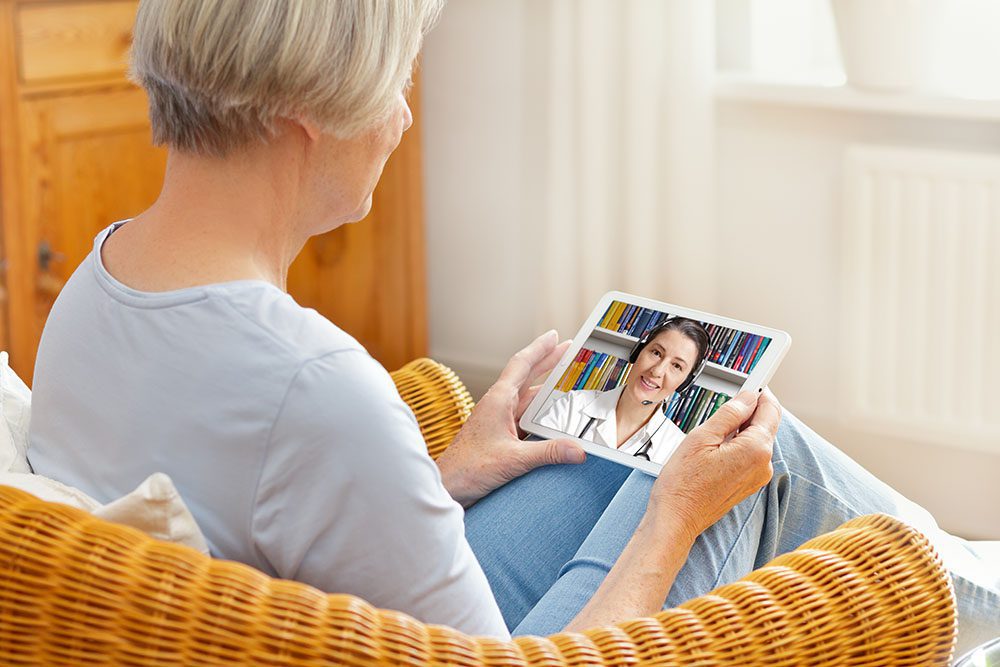If you’re watching the news these days—and who isn’t—you’re hearing a lot about telemedicine. It’s become a popular term, but for most people it’s not clear what exactly telemedicine, and its companion telehealth, actually are. In this three-part series, I’ll explain what telemedicine is, how it’s being used right now, and how it fits into life here at Maplewood.
Telemedicine and telehealth both sound complicated, but they describe a simple concept. The term telemedicine applies whenever medical professionals interact with patients by using technology instead of meeting in person.
For example, if you call your doctor, describe some symptoms and she prescribes you medication, that’s telemedicine. It doesn’t have to be over the phone, though. A different example could be a video meeting with your skincare specialist where he looks at a mole to see if you should have it removed. Telemedicine can range from simple, like a phone call, to complex, like using a smart scale and a blood pressure monitor to send medical data to your doctor.
While it covers a broad range of activities, telemedicine isn’t a blanket term for any time you pick up the phone and call a doctor. Some things that don’t quite count as telemedicine would be making an appointment or emailing the hospital to ask for a receipt. Telemedicine usually
refers to patient evaluation, diagnosis, or treatment. It’s easy to see how telemedicine can be so common even without including coordination tasks like making appointments.
Telemedicine is getting a lot of attention right now, but the concept is anything but new. It has been around almost as long as the telephone itself. Technically, it began the first time a doctor advised their patient via phone call. It has grown steadily from there but it has only recently
become more formalized and easily accessible.
You might be surprised to learn that the space program played an important part in making telemedicine what it is today.
NASA needed a way to work with astronauts in the event that they required medical care while in space. It didn’t make sense to send a doctor to space on every mission. Instead, the prevalence of television and breakthroughs in color video made a clear case for a new way doctors back home could care for an astronaut as they circled thousands of miles above the earth.
The research and development work NASA put into telemedicine was then repurposed by the U.S. government in the 1970s to care for the needs of remote populations across the nation. Test programs were put in place for rural communities in the deserts of Arizona. From there, the government began using telemedicine to augment its response to natural disasters, providing quick care for affected people until help could arrive.
The invention of the telephone, NASA’s space program, and the proliferation of digital technologies like the smart phone have all combined to give us what we now call telemedicine. It’s no surprise that this way of delivering clinical care has become so widespread. Like any technological advance, people continue to find innovative ways to utilize it—including providing care during a pandemic.
Telemedicine is not terribly complex or difficult. It is simply one of the many tools available to medical professionals as they care for their patients. It has a fascinating history and an exciting future, but the field is well tested and ready today.
The next part of this series will look at how the various telemedicine technologies are helping us care for our loved ones right now.



